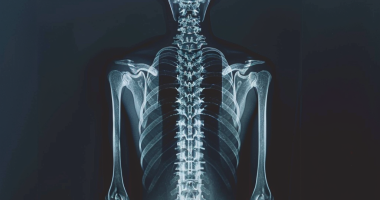Acoustic neuroma
Acoustic neuroma (vestibular schwannoma, neurilemmoma, neurinoma) is a benign tumor that develops from nerve cells. It usually develops on the vestibular branch of the auditory nerve, less commonly on the cochlear nerve.
This disease accounts for 11-12% of all cases of intracranial tumors. It most often develops at the age of 30-50 years and affects predominantly women. Auditory neurinoma does not occur in children before puberty, or such cases are exceptional.
Causes of the disease
There is no exact data on the causes that provoke the development of the tumor, but it is known that neurinoma is a sign of an inherited disease called neurofibromatosis. This disease is expressed in the formation of benign tumors from the nerve sheaths and, therefore, can develop in absolutely any part of the body. If the gene carrying this disease is present in both parents, the hereditary burden of neurofibromatosis is 50%.
Symptoms of auditory neurinoma
There are three stages of development of an auditory nerve schwannoma. The symptoms differ depending on the stage (i.e., the size of the tumor).
Stage 1
The size of the tumor is 2-2.5 cm in diameter. The patient has:
- decreased hearing acuity,
- persistent tinnitus or ringing in the ears (tinnitus),
- inflammation of the auditory nerve,
- facial numbness on the side of the tumor,
- facial nerve palsy,
- swallowing and articulation disorders,
Damage to the vestibular apparatus leads to impaired coordination of movements. Sometimes, the patient may lose hearing entirely in the first stage.
Stage 2
The size of the tumor reaches the size of a walnut. The symptomatology of the first stage is increasing. In most cases, the patient loses hearing, and coordination disorders significantly interfere with life activity. Compression of the brain stem by the tumor leads to impaired formation of reflexes and oculomotor nerves (which is expressed in nystagmus) and even changes in the patient’s behavior.
Stage 3
The tumor reaches the size of a egg. All of the above symptoms of neurinoma increase. Severe compression of the brain stem leads to hydrocephalus with associated symptoms (e.g., severe headaches, frequent nausea and vomiting, persistent weakness, impaired consciousness). Also, due to hydrocephalus, it may begin to compress the occipital lobe and the visual analyzer located in it, which provokes visual disturbances (first of all, diplopia develops). It is not uncommon for an auditory neuroma of the third degree to provoke mental disorders (psychosis). If the tumor squeezes the areas where the respiratory and vasomotor centers are located, it can lead to the patient’s death.
An auditory neuroma is a slow-growing tumor; therefore, the first symptoms a person will notice may not appear until several years after the tumor has begun to grow. Also, the manifestation of symptoms depends very much on the location of the neurinoma on the auditory nerve – the closer to the brain stem the tumor is located, the brighter and faster it will manifest itself. In addition, schwannoma on the cochlear part of the nerve first of all manifests itself in hearing impairment, and on the vestibular part – in impaired coordination of movements.
In some cases, an accidentally discovered neurinoma is so tiny that it does not cause discomfort to the patient, and therefore, its treatment is not insisted upon but requires periodic monitoring.
Diagnosis of auditory neurinoma
Usually, complaints of impaired hearing or coordination of movements appear in the patient only after the tumor has reached a relatively large size. Neurinoma can be detected accidentally during a brain MRI scan ordered to diagnose some other disease. Schwannomas cannot be detected by an X-ray unless the tumor has also affected bone structures. For targeted diagnosis of neurinoma following tests are prescribed:
- audiogram
- MRI or CT scan (will register a neoplasm of 1.5 cm or more)
- ear ultrasound
- auditory brainstem response test
- tumor biopsy
Treatment of auditory neurinoma
In medicine, there are three treatment tactics for neurinoma: wait-and-see, radiation therapy, and surgery. An otolaryngologist and a surgeon are responsible for treating a patient with neurinoma.
Tumor growth monitoring
It is usually used in cases where a neurinoma has been discovered by chance and is not yet bothering the patient. This condition can last for many years. The ENT doctor and the patient should regularly monitor the level of hearing and respond urgently to a decrease in hearing, ear pain, or impaired coordination of movements.
Radiation therapy
Local irradiation of the tumor to stop its growth. This method is more convenient than surgical intervention, as it allows “putting to sleep” tumors located in hard-to-reach places and not amenable to conventional surgical intervention. Side effects include nausea and pain in the neck in the place where the stereotactic frame was placed during gamma knife treatment.
Surgical treatment
Removal of the tumor requires skull trepanning so that the recovery period can take six months to a year. As with any surgical procedure, there is also a risk of bleeding, infection, or the effects of general anesthesia.
All these treatment options are available in more than 660 hospitals worldwide (https://doctor.global/results/diseases/acoustic-neuroma). For example, Surgery for an acoustic neuroma can be performed in 30 clinics across Turkey for an approximate price of $12.1 K (https://doctor.global/results/asia/turkey/all-cities/all-specializations/procedures/surgery-for-an-acoustic-neuroma).
Consequences, prognosis, prevention
The general prognosis for neurinoma is favorable. Because the tumor grows very slowly, a wait-and-see approach can be adopted for the first few years. Surgery for schwannoma is also not too complicated, and if the tumor is located in a convenient place for surgical intervention, it can be removed entirely without any negative consequences for the body.
In some rare cases, both after surgery and radiation, facial nerve paresis and hearing loss may occur. At the same time, untreated neurinoma of the auditory nerve can lead to dangerous conditions, mental disorders, and even death. Therefore, consult an otolaryngologist or neurologist in case of any painful sensations in the ears or complaints of vestibular disorders.



